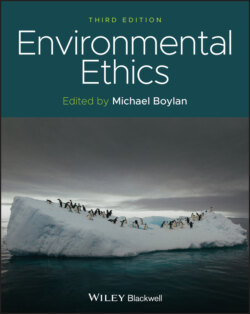Читать книгу Environmental Ethics - Группа авторов - Страница 26
Case 3: Student-Originated Case
ОглавлениеStep One: Separate the class into small groups of 3−4 students each. Select one group and have them go online to one of the major newspapers in your country and find an article that they feel raises a problem that has environmental impact. Then have a representative from the group summarize the problem and cite the source. Post as a Google doc within the group and allow the group members to communicate using “stick notes” and “jam board” for free and easy communication.
After a few days have the representative from the group post the problem on your class’s internet discussion board for comment.* Allow “threads” in your discussion board. Make your discussion board last for a limited amount of time—say a week. Especially solicit responses from the point of view of one of the principal ethical theories—such as virtue ethics, utilitarianism, or deontology.
Step Two: Have the group go over the responses solicited and sort them by: (a) the kinds of solutions advocated by your classmates and (b) the type of ethical theory chosen to support their solution. Using the data that you have gleaned from (a) and (b) try to draw some general trends from the class and then have a representative from the group create a PowerPoint presentation for the class letting them know the majority and minority opinions evinced. The PowerPoint should be no longer than 10 minutes.
Step Three: Break the class into the aforementioned discussion groups of 3−4 individuals each with task of each group to set out arguments supporting (pro) and going against (con) each of the general trends of the class as set out on the PowerPoint. After about 15 minutes of discussion have a spokesperson for each group make an oral presentation to the entire class summarizing that group’s findings. The group summaries should last 3−4 minutes. Depending upon the number of groups, this exercise should last 30−40 minutes.
Step Four: While the group presentations are still fresh in everyone’s minds allow each student to jot down relevant information for their between-class short essay to be completed at home. This task should last 5−10 minutes.
Step Five: Each student should write a 300-word essay between classes on the solution that seems best to them and turn it in for grading in the next class.
This exercise encourages individual response and group collaboration and forces students to make an action commitment after carefully examining the problem and possible solutions (driven by a selected ethical theory). It is best to utilize this lecture early in the class term. [Note: this is easily adaptable to synchronous online teaching.]
